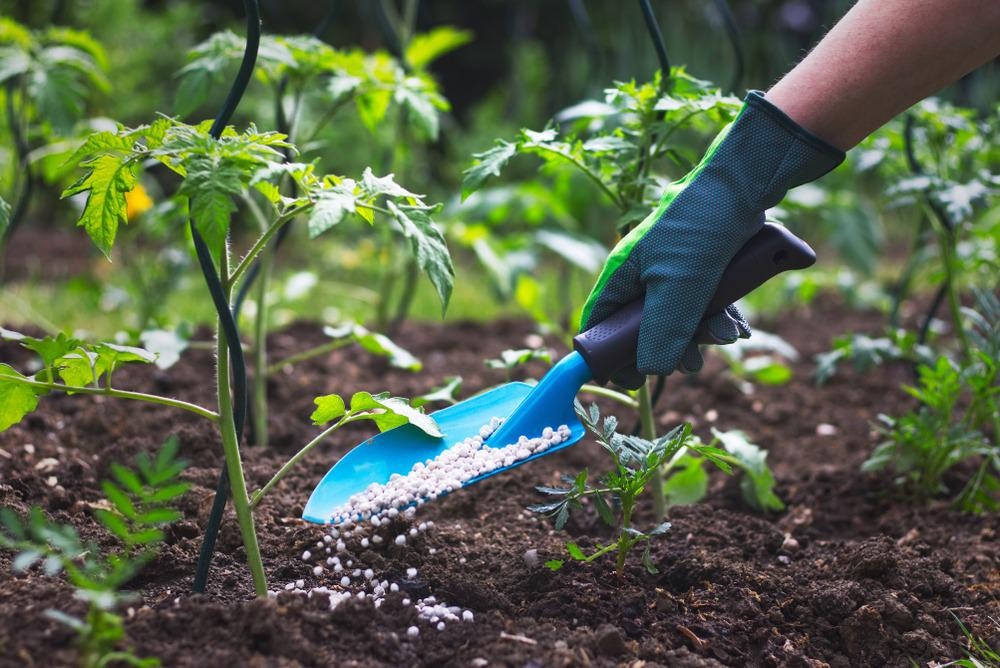In latest the latest study published in the journal Colloids and Surfaces A: Physicochemical and Engineering Aspects, green manganese nanoparticles (MnNPs) were created from two distinct plant extracts, Eucalyptus robusta (ER) and Corymbia citriodora (CC), and their efficacy as a nano fertilizer in the treatment of corn seeds (Zea mays) was tested.

Study: Green Synthesis of Manganese Based Nanoparticles Mediated by Eucalyptus robusta and Corymbia citriodora for agricultural applications. Image Credit: encierro/Shutterstock.com
Nanotechnology has influenced a variety of industries. In agriculture, it tends to create more ecologically efficient fertilizers and pesticides, resulting in higher agricultural output and fewer ecological effects.
Global Agricultural Problems
One of mankind's most difficult issues is ensuring worldwide food availability and reliability. World population expansion, along with the contemporary environment transition paradigm, an increasing shortage of environmental assets, diminishing levels of crop output in certain nations, and a lack of cropland, have heightened the need for creative solutions. According to projections, agricultural output would need to expand by at least 70% by 2050 to fulfill demand. As a result, it is critical to expedite and broaden the development of sustainable farming to secure global food security.
Application of Nanoscience for Agricultural Applications
Nanoparticles can be used as environmentally friendly insecticides in farming. Additionally, it can be used as a fertilizer to mitigate the detrimental impacts of traditional NPK-based fertilizers. Nonetheless, as an option to mass substances and aqueous formulations, they are used as crop anchoring to increase germinating seeds and seed vigor.
Manganese-based nanoparticles have piqued the interest of agricultural researchers because of their nontoxicity, excellent chemical stability, and relatively low cost. These nanoparticles are critical since they are vital micronutrients for animals and plants. They participate in various metabolic pathways, perform fundamental activities in plants, and are directly related to photosynthesis, biogenesis, and energy transfer.
Importance of Plants and Plant Extracts
Maize (Zea mays) is the world's third most grown cereal, trailing only rice and wheat. This grain is essential in the global economy since it is grown in almost every agricultural property and requires much rural work to produce. As a result, research is being conducted to improve its products through the employment of cutting-edge technology.
Apart from that, eucalyptus is an intriguing natural resource due to its wide accessibility and capability for decreasing and stabilizing the generated nanoparticles. The harvest of eucalyptus leaves contains various chemicals of significance for this preparation. Eucalyptus Robusta (ER) has several compounds in its essential oil, which is found in the leaves, that may be involved in creating nanoparticles. The utilization of eucalyptus essence in the creation of silver nanoparticles for antibacterial activity, iron nanoparticles for sewage treatment, and color degrading is quite extensive.
Research Findings
The researchers attempted to create manganese-based nanomaterials for agricultural applications by employing Eucalyptus Robusta and Corymbia citriodora as precursors and reducing agents. Experiments were performed at 14 samples. Experiment 11 (CC extract) yielded the largest bulk with the greatest concentration.
In the case of the ER extraction, the largest mass attained was acquired with the minimum concentration. The rise in mass seen with the increasing concentration of CC extract might be related to the existence of particles of its essential oil, while the detrimental effect on mass seen when the concentration of ER extract was increased might be attributed to a larger quantity of proteins.
MnNPs produced from eucalyptus Robusta leaf extracts exhibited maxima resembling two crystal structures.
Similarly to the mass measured, the extraction yields significantly altered lattice parameters, with the ER extract having a favorable effect and the CC extract having a detrimental impact.
The extract used to make the MnNPs seriously influenced the pore structure. The NPs produced from the ER extract have a round form.
Iron and manganese nanoparticles were tested in maize sprouting, with most tests utilizing nanoparticles showing 100% of the median germination rate, while the control subjects showed 90%. When the carbonized nanoparticles were examined, it was discovered that those made using Eucalyptus citriodora essence had a smaller leaf network mass than the majority of the other studies. This was also seen during the examination of the root system weights.
In summary, a multifactorial project was made for the functionalization of manganese nanoparticles utilizing two distinct varieties of eucalyptus (citriodora and robusta), with the synthesis duration and extract percentage varied. The germination test revealed no statistically significant changes between the specimens, demonstrating that MnNPs are not phytotoxic at the concentrations tested.
Continue reading: The Effect of Nano-Fertilizers on Sustainable Crop Development.
References
Gonçalves, J. P. Z. et al., 2021. Green Synthesis of Manganese Based Nanoparticles Mediated by Eucalyptus robusta and Corymbia citriodora for agricultural applications. Colloids and Surfaces A: Physicochemical and Engineering Aspects. 128180 Available at: https://www.sciencedirect.com/science/article/pii/S0927775721020495
Disclaimer: The views expressed here are those of the author expressed in their private capacity and do not necessarily represent the views of AZoM.com Limited T/A AZoNetwork the owner and operator of this website. This disclaimer forms part of the Terms and conditions of use of this website.